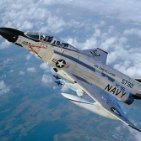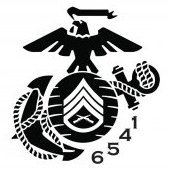Leaderboard
Popular Content
Showing content with the highest reputation on 09/27/2020 in all areas
-
Couldn't resist a little "play"! Having muscled the fuselage into shape (interestingly the Fisher instructions contain two warnings about the kit parts being very thin and prone to flexing, and softness of plastic) and left to harden overnight, I was keen to see how the spine fitted. Fisher's engineering and castings of course are sublime so I just had to do my bit! There are a couple of areas where fit is critical, this is one: where the intake trunking slots in. These in turn determine whether the wings are going to fit properly. Happy to report success in both sides, so far so good! Next will be the tail cone, helpfully there is a small resin stub which with a little adjustment should fit well into the aft end, this having been already trimmed to the correct point. More progress later I hope!!8 points
-
Tamiya 1/32 JASDF F-4EJ Black Panthers
Antonio Argudo and 7 others reacted to spyrosjzmichos for a topic
I can finally call this one done! While not one of Tamiya's finest in terms of engineering I certainly enjoyed the build both for the challenges it presented as well as for the scratchbuild opportunities. And you do end up in my opinion with one of the most attractive camo schemes ever to be applied on a Phantom. While not initially planned to such an extend I did eventually use a number of aftermarket sets: 3D printed tail fin sensors (courtesy of Ben aka Starfighter) Zotz resin wingtip sensors (courtesy of Colin aka Crobinsonh) Sierra Hotel resin exhausts (courtesy of Erik aka Phasephantomphixer) Wolfpack resin AAM-3 missiles (courtesy of Andy aka Kagemusha) DEF Models FOD covers Quickboost F-4 mirrors DXM F-4EJ Kai decals Avionix resin seats Eduard PE exterior details set and resin wheels In addition to the above, there's a lot of scratchbuild items in the cockpit. Painting was done mostly with MRP and Alclad paints and weathering with a combination of Tamiya panel line washes, Abteilung 502 oils and other Ammo/AK Interactive products. Hope you guys like it! Many thanks again to those who contributed with resin sets, references and advise! PS. Someone has already pointed out that I placed the spine air refuelling marking the other way round. I will be fixing this at a later stage.8 points -
RAF FG.1 XV571 WILD HARE Phantom Conversion
Azgaron and 6 others reacted to Anthony in NZ for a topic
Phew...that's what I'm aiming for LOL Sprayed Mr Surfacer on the back end to see what needs attention. Clipped in the lower heat shield piece as a test fit and pretty happy with the initial result. Dont let this pic fool you, there is still a LOT to do around here, but I feel like I am making progress at least Cheers Anthony7 points -

Matchbox Tiger Moth RAAF Air Ambulance
VW Chris 1969 and 6 others reacted to LSP_Kevin for a topic
OK, here's the result of all that filling, sanding, and priming: Acceptable, but still a little bit of work to do. The forward section is hinged and has a slight overhang with the fuselage, along with a reinforcement strip along its bottom edges, so I still need to take care of those elements. I've been contemplating whether I should try to replicate the latches, but since I have no idea how, I probably won't. Thanks to everyone for tuning in and commenting so far. More soon! Kev7 points -
1/32 Revell-Hasegawa Spitfire Mk.1a "K9906"..... Finished.!!
D.B. Andrus and 5 others reacted to Tolga ULGUR for a topic
Hello everyone Ready to start a new early Spitfire project. This is a pre war Spitfire Mk.1a with the markings of FZ-L K9906 The kit is old and hybrid Hasegawa s Mk1 released with the brand of Revell years ago. And a lot of after market modifications. Here we go..6 points -
Title says it all.....I'm happy! Moving aft, tail cone fitted and planning installation of fillets. Just a small amount of clean up needed before gluing into place: And done, quite a delicate operation it has to be said to get the angle and fit right. A little clean up needed when all dry.6 points
-

1/32 Revell Bf109 G-6/AS White 7
Kagemusha and 5 others reacted to Wackyracer for a topic
With the race season abet shortened bench time has been limited to a couple of hours every other weekend. However I managed to get the base coat onto the porcupine. Started off with some midgrey pre-shading and texture Then AK Real Color RLM76 v.2 As with most cameras nowadays the subtle tones arent recorded, but I'm very happy with the outcome.6 points -
Seems like I've started another one on top of all of the others maybe I need some kind of help? Well I think I need some time working on parts instead of painting. Sometimes I just get fed up with the airbrush. So, I've been working on converting the Wingnut Wings Rumpler C.IV (Early) into a 'Kaiserliche Marine' floatplane fighter. First up scratching floats for the build... The finished master, pure sheet styrene. Resin copy. Top wing and lower replacement resin wings. Fuselage cut up... Shortened fuselage... Fuselage put together again incl. the replacement Mercedes D.III engine. Obviously I've been at it for a while... Kent5 points
-
Howdy folks, New reviewer Jean-Paul Poisseroux checks out a new Hunter decal set from Matterhorn Circle: Matterhorn Circle 32019: Hawker Hunter Mk.58/T Mk.68 1958-1994 Thanks, Jean-Paul! Enjoy. Kev5 points
-
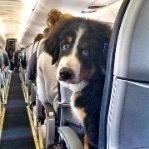
HH-60G Pavehawk Kitty Hawk 1/35 DONE!!
Starfighter and 4 others reacted to Pete Fleischmann for a topic
5 points -
I'm back with the promised update, which mainly concerns the rear spine part. I knew from the outset that this would be a troublesome aspect of the conversion, as the total length of the two resin pieces in my set seemed to come up short. I spoke with Uncle Les about this, and he confirmed that his examples were fine, so I'm not sure why mine aren't the same, but I suspect I might have been overly aggressive when sanding the ends, which would at least partially account for it. Anyway, the upshot of all that is that I knew I would have a gap to fill somewhere, and up until yesterday, the plan was to have that gap be all at the rear of the fuselage, in front of the tail. With the forward piece already firmly in place, I could play around with the positioning of the rear piece, and I discovered that width-wise, it actually fit best when placed right in front of the tail. Placing it back-to-back with the front section would have meant I'd have a mismatch in the widths of the resin piece and fuselage in that position - and I really didn't want that! So, down the back it went, which left me with a sizeable gap between the two resin pieces: I had to trade better fit and less filling at the sides for this gaping hole in the middle! I originally planned to fill it with sheet styrene, and set about creating a new rear wall for the front hood from thin styrene sheet: The interior side was painted in Foliage Green prior to being glued in place. It then occurred to me that I might be able to use a solid piece of resin from an old casting block to fill in the rest in one go, rather than having to glue a bunch of thin sheets in there. I eventually found one that would work, trimmed it to size, and glued it in with CA: There's still a slim gap at the rear of the resin block, but I filled that with some more thin styrene sheet. After trimming and sanding, I arrived at this: I back-filled the joins with a combination of CA and talcum powder, and sanded everything back. Since taking these photos, I've given the area a generous coat of Mr. Surfacer, and it tells the tale of more work to be done. I also managed to sand a slight depression into the area just ahead of the join, but I should be able to render that unnoticeable. It's an occupational hazard when sanding an area made up of different materials. OK, back with another update when I'm done filling and sanding. Phil Sand5 points
-
32nd Cheetah E (ScaleWorx resin conversion set)
blackbetty and 4 others reacted to Mistral for a topic
Thanks all Alain, you need an E to keep your C company ! Nick, thanks for all the help on reference piccies and other details. Black Mamba - I agree wholeheartedly that John should finish his D conversion - pleeeaaaase... Here are some photos of the Cheetah E with is older family members - all Italeri 32nd scale kits - 1st - Mirage IIICZ in early natural metal scheme with red GT stripes : 2nd - Mirage IIICZ in the early gloss hard edge buff/green camo : Finally, with Mirage IIIRZ in non standard two tone blue grey low vis scheme :5 points -
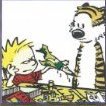
EA-6B Prowler (02 April: Done!)
Derek B and 3 others reacted to easixpedro for a topic
OK Lads, small progress this weekend. But wanted to share regardless. Managed to make the center section between the fore and aft cockpits. Built it similarly to the rest...by just planking sections of styrene together. Allowed me to use the leftover piece of the Trumpy canopy to get the profile right. And here it is with some sanding and a bit of putty. I also feckled around with using that Trumpeter canopy. Wont work (could, maybe) cause if you look carefully, it's kind of bowed (blown). That profile is good for the forward canopy, but the arch precludes its use on the aft canopy. Will end up having to form them myself... You can also see that I've started sanding the windscreen. Have taken off a little less than 2mm...going slow here so I don't ruin the part. Goal with all of this is to get the clear stuff assembled before I start on the interior. I won't attach anything so I can set it aside till its needed. Guaranteed that if I built out the cockpits, I'd end up with a ton of sanding dust inside my closed up cockpits... Till next time! Peter4 points -
OK - so I got a little sidetracked this weekend - and did a bit more on the Camel. I'm now back at option 'C' - the blue 'Suds' - and i can't change my mind again, 'cos me model's now blue! All tucked up in the paint oven (airing cupboard) for everything to dry - including some fresh oil paint and some *very* glossy MRP Black, ready for some shiny cowling work later this week. I tried using one of the rudder stripe decals - was forewarned that on some of the Camel kits the decals have a marked propensity for breaking up - so they were soked in hot water in a small container - and separated beautifully. However, I applied several coats of MicroSol and made the mistake of trying to flatten a bubble with a brsh after the decal had been soaking in MicroSol for quite a while - so that broke that! Will spray the rudder stripes - but helps me with getting the next decals right! Also first go at some rib tape masking - and it came out OK - was aiming for a 'hint of subtle' and that's what I got! Photo is a quickie on mobile phone - will get some better ones tomorrow... And, yes, the blue won't look quite so neat/uniform on the finished model. I can see why people enjoy building these kits - but I'm still dreading the rigging! Blue skies... Iain4 points
-
A not terribly exciting picture as the final one till Friday at the earliest......but there you go!!4 points
-
Spent some time today trying to get both upper and lower wings ready to paint. The leading edges required modest, but not onerous, filling and sanding. I had to tweak the ailerons just a bit as well to get a good fit before gluing them in place. In anticipation of doing lots of masking and not wanting to pull up paint, I gave the whole surface of both wings a solid sanding with a 2500-grit sponge to give the surface some good tooth. I'll wipe it down thoroughly with alcohol before coating with Mr. Primer Surfacer 1000. Hopefully this will give a solid bond! I also taped up the fuselage to check fits (good) and glue the forward side pieces in place so I could have the full fuselage halves up to the firewall in one piece before doing any interior detailing. I can only guess that there are other variants of the kit in the works that would use a different version of that forward part; otherwise why make it separate? This also allowed me to check the fit of lower wing to fuselage, which is also pretty good (especially relative to the SH Nate): I then began work on the anchor points for all of the rigging wires. On the actual aircraft, some of these attachment points are covered with leather or rubber boots, as you can see here on the attachment points just inboard of the interwing struts: No provision is made for these boots in the kit, but Quickboost makes some resin ones, which I ordered. If those look nice and straight forward to use, I'll go that way; otherwise I might try to make them with e.g. built-up layers of PVA glue over the attachments. For the other attachment points, that don't have boots, I'm just gluing in tiny wire eyebolts that I can connect the rigging wires to. I've got more of that to do tomorrow...4 points
-
Thanks for the kind words. I used mostly MRP paint. I started with gloss black, then super silver. After that I used clear metallic blue, violet and burnt iron. Then I hit it with some pale burnt metal and finished off with some Alclad jet exaust. It's the pale burnt metal that has the golden tone. Have also pu stencils on bottoms of both wings. A very long way to go.4 points
-

SH Tempest Mk V "Kicked Up A Notch". January 14/21 New eBook!
Elftone and 3 others reacted to chuck540z3 for a topic
September 25/20 I'm back! Yes already. Carpal Tunnel wrist surgery is over and thank you for all the good wishes. As it turned out, the surgery itself was pretty quick at about 30 minutes and although I’m pretty sore today, I was told by my doctor to use my wrist after a few days and not baby it, to help prevent scar tissue from growing over the median nerve in my hand that caused the problems in the first place. I’m all for that! Too sore to model and pick up tiny parts, but I can paint with my right hand just fine, so I decided to paint the Landing Gear Wells (LGW). When adding the wiring and plumbing, I should have shown a few pics of the real deal first that I used as references. Here’s a couple I lifted from the ‘net of the front and back of the LGW, showing the major conduits and other wiring. Before I painted them RAF Interior Green, I sprayed everything in gloss black as a base for quality control, a primer and for background shading. Lots of modelers do this, but it makes me cringe when I see them use flat black, because the paint is naturally rough to begin with and subsequent coats of flat paint make it even rougher. Use gloss black instead- and note that I painted the cockpit floor and sides that you can see from above. I also painted the gun openings black before they are glued together, to provide a dark background within. Nice and smooth…. After green paint, which I thinned 50/50 and allowed some of the black to show through. As I hoped, this made all the wiring really pop and show the various widths of wire more clearly- and where they went. I'm not going to be adding any weathering or grime to the LGW's until the end of the build, when I weather the rest of the fuselage and wings. When my wrist heals a bit more, I’ll be able to get the wings glued together and attached to the fuselage. Doctor's orders! I already know this will be tricky in order to get the dihedral correct, but I have some ideas. Thanks for checking in. Cheers, Chuck4 points -
The Master metal pitot probe is gold4 points
-
I've been going back and forth wether to participate in this GB or not. There are some trainers in my stash (e.g. the Bü 131) but my main topic is recon planes and therfor most trainers will be build as liaison planes. Speaking of recon birds: my FR IXc Spit is still sitting on the shelf waiting for completion... Anyway I chose a rather simple subject: A Polikarpov Type 10 in the (post war) colours of the Spanish Airforce. Some of the former republican Ratas were used as training aircraft at Moron airbase until mid fiftys! I bought the ICM decals some time ago but I think I'll ditch them since I gained a lot of confidence with cutting maks on my Silhouette Portrait. The only addition (so far) is the beautiful brass landing gear from Aerocraft. Stay tuned Joachim3 points
-
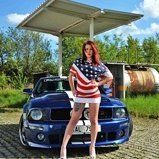
Bf 110C-2 1/NJG 3, Benghazi 1941 1/32 Revell/Dragon
AlbertD and 2 others reacted to Miloslav1956 for a topic
My first Bf 110. 1/32 Revell kit HGW Seat belts & wet transfers All colours MRP Finished.3 points -
3 points
-
Hi all, Just finished this, lovely kit - but the Meng additions are average - Instructions/ Decals. The wings were bent, but easily reformed. Work in Progress here: https://forum.ww1aircraftmodels.com/index.php?topic=11486.0 Guy3 points
-

Fuji FA-200, 1/20 Nichimo
Paul in Napier and 2 others reacted to mgbooyv8 for a topic
Hi guys, Not much has happened the last weeks. I've also been flying a couple of days, fortunately when the weather was excellent. Anyway, I sanded and re-puttied the fuselage. In the mean time I finished the assembly of the wings by putting on the top halves and the wingtips. I had to avoid glueing the ailerons and flaps to the upper halves, so it had to be done in stages. There are no locating pins, so I started by aligning and glueing the leading edges: After hardening, the inner edges at the moving surfaces were joined, taking care to avoid glueing the ailerons and flaps: Then I had to glue and clamp the middle parts of the inner edges, like this: And finally the wing tips went on. They didn't need clamping, but careful alignment was needed: Some putty will be needed because the fit is not that precise. The wingtip shape is slightly different from the wing airfoil. The seam is not a panel line, that is the one next to it. To be continued. Cheers, Peter3 points -
Howdy folks, I've just published the latest What's New update. Enjoy! Kev3 points
-
Thanks again, my dudes. Wasn't able to get much more done today, but I did turn my attention to the canopy once again, as this is the crucial area of this conversion, and the build overall. As you might remember, I've been delaying the decision about opening up the canopy until as late in the process as possible. Opening it up would make it easier to get a good fit, owing to fewer mating surfaces having to match up, but it would also expose the cockpit and hospital stretcher, and also require more detailing work on the opened canopy itself. So the decision was going to hinge (pardon the pun) on which was worse: the fit of the vac canopy (= open it up) or the my work in the cockpit and stretcher area (= leave it closed). In order to arrive at my decision, I had to do some extensive test-fitting and adjustments to the various elements involved, including deepening the ledge at the front of the rear spine, judicious sanding of the vac part, and this: I carved a recess into the forward fuselage for the new windscreen to sit in, as without it, it would just splay out and look weird. This doesn't exist on the real thing, of course, but was done in the interests of a better result on the model, and shouldn't actually be noticeable in the end. At this point in the proceedings I can say that I'm happy with the cockpit, but not so much the stuff behind it. So the tentative choice at this stage was to keep the canopy closed. Let's do a final test fit after all the adjustments and see what that tells us: Doesn't look too bad! You can see that I've already started to add some internal framing from styrene strip, partly to assist with adding more detail if necessary, and partly to make the canopy more stiff and robust. The clincher, however, is the view from the rear: There's a fundamental mismatch in the shape of the canopy versus the shape of the resin part where they meet, and I eventually concluded that there was no way of fixing this. If you look carefully, you can also see how dramatically the clear vac part thins from top to bottom, which is why I had to add reinforcing strips to the bottom on each side; on one side, it was so thin it was buckling. So, my final decision is that I really have no option but to open it up! It'll obviate this fit problem at the rear, at least. But another problem lurks, which I'm sure some of you have picked up on already: the clear vac part has the stepped striations from its 3D master evident in its own form, and I don't think anything I can do will make them less noticeable. There's a chance that having the canopy hood open will reduce the visual impact of the issue, but if not, I may have to try to cut the clear panels out and replace them! Kev3 points
-
Chosen subject Unusually I've already settled for one particular airframe before I touched the plastic. It's C.8-25 from Morón aviation school (please note the accent ). There are some colour pictures from a museum but that seems to be just a replica. After some hours without any results I finally found pictures from the original airframe. It's upposed to be painted in the standard light blue/green scheme, oversprayed with a sand colour in a squiggly matter. Eduard in their 1/48 kit and ICM depict the colour scheme as sand base with green mottle which makes no sense to me. Onto the plastic Even more unusual for me, I decided to start with the engine. It's detailing is okayish but suffers from flash. Displaying the engine by leaving of the cowling panels isn't an option right now. I just don't have the motivation to do major scratch building. One thing that's absolutely necessary is hollowing out the exhausts since they will be very visible. It takes a lot of time but I think it's worth the effort. And not much later on, there already is acomplete dry fit The dry fit revealed that the fuselage to wing join needs some reinforcement. I copied the typical short run fashion for mounting tabs. As you can see in the lower left the trailing edge needs some clean up. I used some stretched sprue to have some material to shape. So far it's a joy and I can see quick builders finish this one up over a weekend.3 points
-
Thanks for the kind words Anthony. Final tranche of piccies : Complex arrangement of the lower Cheetah E nose : Canopy removed to show seat detail :3 points
-
I've been itching to make this ever since Lothar sent it to me (thank you old friend!). I know the SW Tiger Moth is going to be "testing" in terms of patience, delicacy and detail at times, so I need something more robust, dare I say "straightforward" as an antidote! Rock on!! Not surprisingly, it will be finished as a 56 Squadron T7:2 points
-

ResKit stuff with photos.
scvrobeson and one other reacted to Helmsman for a topic
As I promised some time ago, here are some photos of new ResKit stuff. Unfortunately, ResKit doesn't show its goods in their full glory but posts just 3D renders. So... 1/32 Su-27 exhaust nozzles These nozzles measure 37.2 mm which perfectly fits Trumpeter kit.2 points -
By far my longest, most involved project to date. Many people followed along and offered advice and encouragement on my build thread, but I would like to especially call out and thank Ryan (A6M) whose expert advice on all things Zero was immensely helpful and made this a better model than I otherwise would have been able to build. I tried to up my RFI game a bit on this one by purchasing a cheap tablecloth to use as a background and actually digging out my old DSLR (versus just taking iPhone photos). Perhaps for the next model I will further improve on this by ironing the tablecloth... First some shots featuring the detailed innards of the forward fuselage, plus the folded wingtips.2 points
-
Tamiya F-4J Phantom VMFA-232 Red Devils *Finished*
Anthony in NZ and one other reacted to jmel for a topic
That is a REALLY great point, and a definite pet peeve of mine. Seats on display at museums, etc, cannot be used as reference, and too many aftermarket manufacturers tend to do so. the Aires seats are accurate only for USAF jets, though, so aren't applicable to an F-4J, even though they are included in an F-4J cockpit set.2 points -
1/32 D3A1 VAL?
Phartycr0c and one other reacted to Royboy for a topic
I agree with Kevin Thor, I think I understand where your coming from, but everyone enriches this site regardless of perceived skills by others. We share this site with some very talented individuals from all areas of the hobby, and I hope it continues to enrich our enjoyment here for a long time to come.2 points -

Ki-86a Cypress - ICM 1/32 - Complete
Landrotten Highlander and one other reacted to mozart for a topic
Alex, I put all the pictures that I took that day into a walkaround: https://www.largescaleplanes.com/walkaround/wk.php?wid=1892 points -

Hasegawa Focke-Wulf Fw 190F-8
LSP_K2 and one other reacted to thierry laurent for a topic
Yes but take care as the initial Hasegawa D9 released in the nineties was a limited series hybrid kit combining the wings of the very old F8 kit of the seventies with a new fuselage (with recessed scribing) as well as some white metal and photoetched parts. Avoid that one. The 2000s later release was far better (fully new kit) and has a classical STxx kit number. Have a look at the LSP database and you will see the difference.2 points -
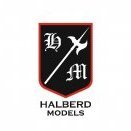
Rubber tires on plastic wheels
Piprm and one other reacted to Halberd Models for a topic
Hello. As I understand it, we are talking about our sets of Halberd Models. Let me answer all the questions in order. First, Dunlop tires were massively installed on German aircraft during World War II, apparently there is the same story as with Ford cars that were massively in service with the Wehrmacht. Second clearance between tire and rim on Do-335 set. That's quite possible. We were faced with this situation, several modelers wrote that the disc and tire do not sit under tightness. The reason only applies to some of the first sets, since they had a minimum tension when designing, in all new sets this problem was not observed. The reason is that today the company Axsson whose materials we used have been taken over by Sika and it has changed the characteristics of the resin that we used, this material after casting gives a large shrinkage of parts. To date, the material has been replaced and this problem does not exist. We are always open to dialogue and communication. Some modelers contacted us with their problem that after processing they damaged parts or tires, we always went to meet them and changed the damaged parts free of charge. If you have any problems, please write to us, we will be happy to help you. Best regards from Ukraine, Andrey. https://www.shutterstock.com/ru/image-photo/junkers-ju88-airplane-wreck-world-war-607612842 points -
RAF FG.1 XV571 WILD HARE Phantom Conversion
Derek B and one other reacted to Anthony in NZ for a topic
Thanks Al, yes it's pretty good for a first test fit, but looking at it I am going to definitely need your piece to arrive. There is something funky going on when you combine the resin and Tamiya kit. There seems to be some sort of twist and size differences. I am thankful for using the complete (well mostly) lower wing and what I can of the Tamiya kit as it is helping keep all my datums correct...just2 points -
You're being too kind Lothar . On the other hand one build without a major boo boo would be nice. There is good and there is bad news. The latter up front: Unfortunately cutting the serial number and surrounding with my Silhouette proved to be nearly impossible. Even with the slowest setting and loest possible force where there was still a cut, the masks got butchered. Some letters (like the M in Marine) went fairly well but rather complex letters (A, R, 5 and 9) ended up torn apart. I guess letters with a height of 1.5 mm are and maybe will remain in the decal domain. Some better news: all mishaps are patched up and the anchors were painted The upper proved to be difficult since it's really thin - even though the mask looked fine. Well one mor repair before the gloss coat.2 points
-
RAF FG.1 XV571 WILD HARE Phantom Conversion
Azgaron and one other reacted to Anthony in NZ for a topic
Aaaaaand on! Phew that was stressful getting a clean join. Off to bed soon, busy day doing house stuff etc, but at least I got this accomplished for the day Cheers Anthony2 points -

ResKit stuff with photos.
scvrobeson and one other reacted to Helmsman for a topic
1/32 F/A-18 engine nozzles2 points -
I disagree completely, Thor. Singling out specific individuals that may be seen by a few as "all that", pretty much insults all of those that don't get mentioned. I'm absolutely opposed to it.2 points
-

A6M2 Model 11, Minoru Suzuki
Out2gtcha and one other reacted to Miloslav1956 for a topic
Last update.2 points -

Malvinas Pucará FINISHED
Rockie Yarwood and one other reacted to blackbetty for a topic
plasticcard for the floor of the pit and some old resin seats from verlinden. these are for an F-4 and seem to be MB Mk 5s, so they would work EDIT: they dont2 points -

Malvinas Pucará FINISHED
Greg W and one other reacted to blackbetty for a topic
since the tailboom is very long, i will have to insert weight under the cockpit floor, but will do this from the back of the front fuselage part2 points -

Malvinas Pucará FINISHED
Rockie Yarwood and one other reacted to blackbetty for a topic
i started to modify the front fuselage for the cockpit floors. front and back seats are staggered in height. the inside of the 3D part is hollow with just some thin strings of material present, so after cutting through the surface it pretty easy to make room. i used a mini cutoff wheel and stanley knife for this.2 points -

Malvinas Pucará FINISHED
Uncarina and one other reacted to blackbetty for a topic
just stuck together with the pins and some tape, this is a pretty big airplane2 points -
Ok guys, I need an honest opinion on the seats. These are the Quickboost seats with molded in seatbelts. I still have the Aires seats and PE belts that I can still paint up and use. Also have a set of Eduards painted PE belts I could use with the Aires seats.2 points
-
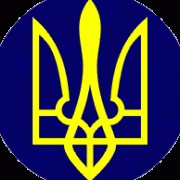
A6M2b Zero Lt. Fusata Iida, Carrier Soryu, 07 Dec 1941 [Tamiya 1/32]
mywifehatesmodels and one other reacted to Alex for a topic
And then with the wingtips extended and cowling buttoned up, as spotted on deck prior to the raid on Pearl Harbor. (the extended version of the wingtips has too thin a coat of paint on them. I will fix this at some point...) And one of the undersides, for completeness2 points -
Some more views of the "opened up" mode.2 points
-
Stippling Weathering Technique
Modeller 01 and one other reacted to dodgem37 for a topic
Kent (kkarlson) asked in the Ready for Inspection post of the Hartmann Bf 109G-14 White 1 if I could elaborate on the weathering technique I used. So here goes. I first used this technique a ways back in the Tamiya Israeli P-51D thread, using it with enamel paint to weather the bombs. Seen here: And here: In these two images I airbrushed the bomb OD then mixed up equal amounts of OD and Black and using the end of a flat brush gently dipped into the mixture, removed the overage on a paper towel, and gently tapped the bristles about the bomb. I did the same with equal amounts of OD and White, then with Yellow, going from dark to light, and creating a physical texture of paint, as the enamel wasn't thinned, and a color texture of dots. For the Hartmann White 1 I used a Black Gouache (a water based paint) wash then stippled. Seen here: So, using my next build, a Hungarian Bf 109G-14, as an example, this is how I did the Hartmann White 1: I started with flat brushes. I used the top two. Made a wash so the end result would be constant. Used the white brush to put on randomly located washes. And used the end of the red brush to tap the wash, which absorbed the excess. And left little random dots from the bristle ends. Here I put a lot more wash on than needed, which is OK. Because after I finished stippling here, I simply continued to finish the rest of the wing with the excess which had capillaried up the bristles. This is the other wing. I use Gouache because if the results turn out badly I can remove it with water and try, try, again. There you have it, stippling with Gouache. Pretty darn easy. Thank you for your interest. Sincerely, Mark2 points



